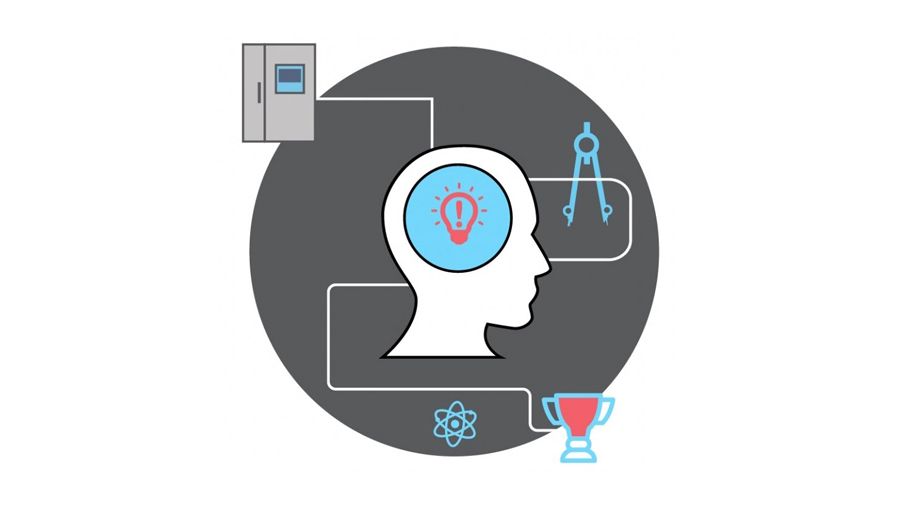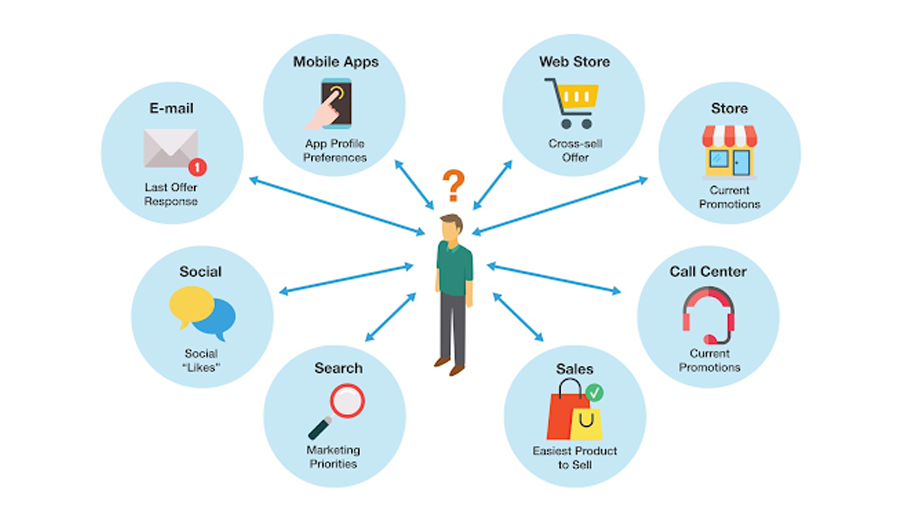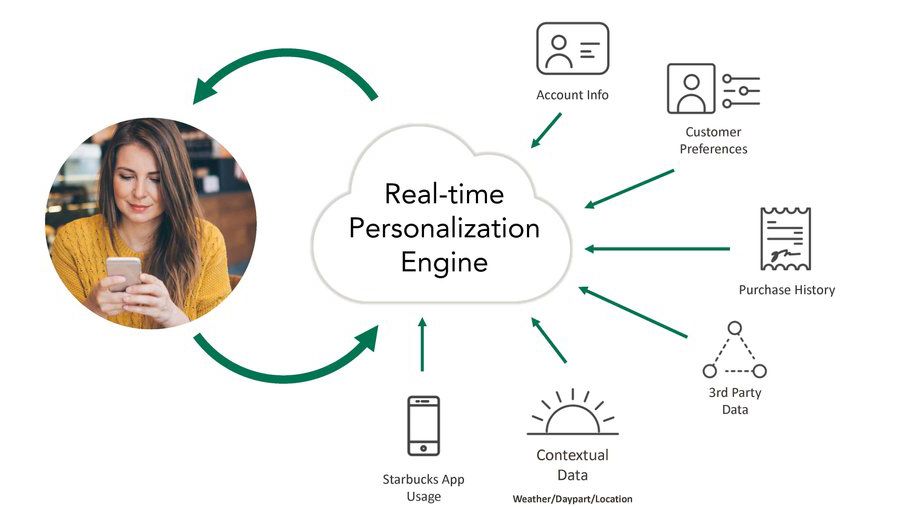4 Ways AI and Machine Learning Transform Direct-To-Consumer Commerce Marketing
In this article, discover how AI and machine learning revolutionize DTC brand marketing, analyzing customer data, predicting behaviors, personalizing campaigns, and real success stories in AI-driven strategies.

In the dynamic realm of digital marketing, a transformation is underway, guided by the power of Artificial Intelligence (AI) and Machine Learning (ML). These technologies are reshaping the landscape of Direct-to-Consumer (DTC) commerce, breaking geographical boundaries, and fostering innovative customer engagement strategies.
Consider a fashion brand like Warby Parker, disrupting the eyewear industry with AI-powered virtual try-ons. Or take Dollar Shave Club, which uses ML to curate personalized grooming product recommendations. These are just two instances of DTC brands that have harnessed AI and ML to redefine customer engagement.
This article explores these technologies, offering insights for digital marketing agencies, tech firms, media houses, and eCommerce platforms. Aimed at enhancing customer connections, driving growth, and improving efficiency within these industries.
The era of rigid, one-size-fits-all marketing is fading. Today, AI and ML dynamically adapt to vast datasets, enabling precise predictions of customer behaviors and preferences. This evolution is about understanding customers deeply, transcending mere statistics.
AI and ML aren't just new technology tools; they're the architects of exceptional customer experiences. Explore these strategies not as theoretical concepts, but as practical pathways to success for DTC businesses worldwide.
Enhanced Customer Insights
The fusion of AI and ML is revolutionizing the digital marketing landscape, particularly in DTC commerce. These technologies are now essential tools that are shaping how businesses engage with their customers. For digital marketers, this transformation is pivotal.

DTC brands are leading the way in leveraging AI and ML to decode customer behaviors, predict preferences, and craft personalized experiences that leave a lasting impact. While Warby Parker and Dollar Shave Club are prominent examples, numerous other DTC brands are utilizing these technologies in ingenious ways.
- Stitch Fix: Uses ML algorithms to analyze customer style preferences. By examining user-provided feedback and browsing history, Stitch Fix curates custom clothing recommendations, creating a highly personalized shopping experience.
- Spotify: Spotify's "Bummer Summer" playlist showcases how AI-driven strategies can effectively connect with Gen Z's emotional needs. By curating music that resonates with nostalgia and melancholy, Spotify leverages AI to strengthen its customer engagement, offering a tailored musical experience that fosters a sense of relatability. This approach highlights the potential of AI in connecting with diverse audiences on a deep emotional level, making it a compelling example for digital marketers and technology companies seeking to enhance customer engagement through empathetic content.
- Sephora: The cosmetics retailer deploys AI-driven chatbots to provide personalized beauty recommendations. By considering factors like skin type, style preferences, and product reviews, Sephora's chatbots offer tailored skincare and makeup product suggestions.
Now, let's delve into the heart of this transformation: enhanced customer insights. AI and ML provide an in-depth analysis of customer data, uncovering valuable insights into behavior and preferences.
Imagine AI algorithms processing extensive datasets that encompass not just browsing habits but also purchase history, social media interactions, and more. This comprehensive data collection forms the foundation for creating intricate customer profiles, each revealing a unique narrative.
In the realm of digital interactions, customers leave behind a trail of data breadcrumbs. AI acts as the guiding light that navigates brands through this labyrinth of customer interactions. It meticulously analyzes patterns, revealing hidden insights that would otherwise remain concealed. The result is more than just graphs and charts; it's the revelation of the "why" behind the "what"—an enigma that marketers have long sought to decipher.
This is where AI's true power shines. By tapping into the intricate rhythms of customer behavior, AI empowers digital marketers to understand not just surface-level actions but the motives and intentions behind them. In an age where personalization is paramount, this profound understanding is the cornerstone of successful strategies.
These technological advancements have quantifiable impacts on the bottom line. A McKinsey study indicates that players that invest in AI are seeing a revenue uplift of 3% to 15% and a sales ROI uplift of 10% to 20%. These aren't just numbers; they validate AI's tangible impact on the profitability and efficiency of DTC brands.
But it's not merely about revenue; it's about forging authentic connections. AI algorithms can reveal that a customer's affinity for a particular product is linked to a shared interest, bridging the gap from transactional interactions to meaningful connections. For digital marketers navigating this dynamic landscape, AI and ML are about moving beyond the numbers, exploring these strategies not as abstract concepts but as practical pathways to success in the world of DTC commerce.
Hyper-Personalized Marketing
While personalization has been a buzzword for some time, it's no longer enough to simply address customers by their first name or recommend products based on general demographics. Hyper-personalization takes things a step further. It leverages advanced technologies like AI, ML, and predictive analytics to craft unique, one-on-one experiences.
Personalized marketing typically segments customers based on shared likes, dislikes, and activities, often leading to generic recommendations. This approach is akin to grouping Ozzy Osbourne and Prince Charles together because of similar demographics, despite their vastly different interests. Hyper-personalization, on the other hand, delves into real-time data, behavioral insights, and individual preferences, ensuring each customer feels truly special.

Hyper-Personalized Marketing in Action:
- AI-Driven Offers: Starbucks employs AI to analyze real-time data and offer users unique, personalized deals based on their preferences, activities, and previous purchases. With over 400,000 variations of hyper-personalized messages, Starbucks customers receive tailor-made communication.
- Keyword-Driven Personalization: Secret Escapes adapts its website based on users' search keywords and clicked ads. If a user searches for "spa retreats" and clicks on a relevant ad, they are directed to a personalized landing page, leading to a 26% increase in sign-ups.
- Customized Dog Feeding Instructions: PetPlate includes personalized inserts in new customers' orders, welcoming their dogs to the "PetPlate family" and providing customized feeding instructions. This approach led to a 20% decrease in customer inquiries about feeding guidelines.
- AI-Powered Product Recommendations: MandM Direct switched to AI-powered product recommendations, resulting in fewer homepage items shown but all tailored to the user. This led to a 5.5% year-over-year boost in online sales, according to Digital Commerce 360 estimates.
The Power of DAM in Hyper-Personalized Marketing:
To deliver hyper-personalized experiences, businesses require not only data but also content—lots of it. Manual personalization is no longer feasible, making a shift to programmatic personalization essential. Digital Asset Management (DAM) platforms streamline content production and management, allowing organizations to adapt content automatically based on user context and behavior. This automation reduces time spent on manual tasks and ensures a seamless, personalized customer journey.
Hyper-personalized marketing isn't a trend; it's a necessity in the DTC commerce landscape. Companies that excel at hyper-personalization generate 40% more revenue than their peers. It's a shift from mass marketing to individualized, one-on-one connections, and it's a transformation that echoes throughout the entire customer journey.
Predictive Analytics
Behind the scenes, ML algorithms engage in a meticulous dance with historical data. It's more than number crunching; it's a symphony of pattern recognition that deciphers trends and unveils the roadmap of future actions. Imagine being able to peer into the collective decision-making of customers, to read the signs that guide their interactions.
Driving Growth and Retention: Companies leveraging predictive analytics through ML algorithms are able to significantly boost their average order value and reduce customer churn rates. This strategic use of data-driven insights has become a linchpin for modern business success. According to a study by Gartner, a leading research and advisory firm, a staggering 79% of corporate strategists see AI and analytics as critical to their success over the next two years.
Strategic Advantage Unleashed: With this predictive power at their disposal, DTC brands step into the realm of strategic advantage. It's no longer a shot in the dark; it's calculated moves based on insights gleaned from the past and projected into the future. Imagine forecasting purchase decisions before they even happen, envisioning product preferences before they're expressed—this is no longer the realm of imagination; it's the reality that ML bestows.
Optimizing Inventory Management: Consider the implications for inventory management. By foreseeing trends, ML allows brands to optimize their inventory, ensuring that shelves are stocked with what customers desire, minimizing waste, and maximizing profit margins.
Revolutionizing Marketing Strategies: The transformative power of ML doesn't stop at inventory—it resonates throughout marketing strategies. Imagine curating campaigns that align with customers' preferences before they've even articulated them. It's a harmonious blend of creativity and foresight that captures attention and engagement.
Here are a couple of examples:
- Strategic Warehouses Stocking: For instance, companies like Amazon have mastered this art. Amazon's advanced predictive analytics algorithms help them anticipate customer demand with remarkable accuracy. This allows them to stock their warehouses strategically, reducing overheads and ensuring fast and efficient order fulfillment.
- Sleep-Targeted Promotion: L'Occitane noticed Brazilian users visiting their website between 10 pm and 5 am. Assuming these users might have trouble sleeping, L'Occitane displayed a promotion for a pillow mist spray during these hours, resulting in improved engagement.
- Content Recommendation: Take Netflix as an example. The streaming giant leverages predictive analytics to recommend content tailored to individual viewer tastes. Their recommendation system, driven by ML, analyzes past viewing behavior and preferences to suggest shows and movies, contributing to an astounding 80% of content consumed on the platform. This level of personalization keeps viewers engaged and subscribed.
Predictive analytics, powered by ML, has become the cornerstone of modern marketing and customer engagement. Companies that embrace these technologies gain a significant edge in understanding and satisfying their customers' needs. For leaders in digital marketing, technology, and transformation, the message is clear: to thrive in the digital landscape, predictive analytics driven by ML is not an option but a necessity. It's the key to unlocking growth, retaining customers, and staying ahead in an ever-evolving digital world.
Efficient Automation
The role of efficient automation cannot be overstated. It's a vital component that not only enhances customer interactions but also drives operational efficiency. This shift towards automation is not just a trend but a strategic imperative, and here's why it's paramount for businesses of all sizes and industries.

- Enhancing Customer Interactions: AI-driven chatbots provide instant, personalized responses to customer queries, regardless of the time of day. These chatbots also collect valuable data on customer preferences and pain points. For instance, a Gartner customer service and support (CSS) survey of 50 respondents conducted online in January and February 2022 revealed 54% of respondents are using some form of chatbot, VCA or other conversational AI platform for customer-facing applications.
- Personalized Emails at Scale: AI-powered email marketing platforms enable highly personalized emails at scale by analyzing customer data. Personalized subject lines increase email open rates by more than 20%. Personalization can increase the ROI on marketing spend and lift sales.
- Operational Efficiency: AI-driven automation optimizes various operational aspects, including inventory management. AI can forecast demand accurately, minimizing waste and increasing profit margins. For example, Amazon reportedly saved billions of dollars by using AI-driven demand forecasting.
- Practical Implementation: Clear objectives with quantifiable metrics, such as hours saved through automation, should be established. Timelines should be set with achievable milestones to maintain focus. The right AI tools must seamlessly integrate with existing systems, be accessible to non-technical users, customizable, scalable, and compliant with data regulations.
- Cultural Alignment: Employees should be educated about the benefits of automation, dispelling fears of job displacement. It's crucial to communicate that AI replaces tasks, not jobs, enabling staff to focus on more strategic and creative endeavors.
- Cross-Functional Collaboration: Convincing senior management of the benefits of AI adoption is paramount. A cross-functional task force should oversee AI initiatives, monitoring KPIs and communication across departments. AI ambassadors can conduct workshops to train staff in utilizing new tools effectively.
- Start Small, Grow Incrementally: Starting small with AI adoption allows for careful experimentation. Incremental adoption provides insights, quick wins, and the flexibility to address operational roadblocks effectively.
Efficient automation is the bridge to efficient customer interactions, streamlined operations, and ultimately, success in the competitive business landscape.
Embrace AI and ML in the DTC Marketing Strategy: 6 Key Actions & Recommendations
The integration of AI and ML within the DTC commerce is not just theoretical—it's a reality reshaping the way brands engage customers. Success stories abound, from brands that transformed customer engagement through AI-driven chatbots to those that harnessed ML to predict demand and enhance supply chain efficiency. These real-world examples illuminate the transformative potential of AI and ML when harnessed effectively.
In the expansive canvas of marketing, AI and ML serve as the masterstrokes that compose a vision of the future where personalization transcends exceptionality to become the prevailing norm. Within this framework, insights do not sit idly by in obscurity. They prompt action. Customer engagement isn't just a plan; it becomes a memorable experience.
As DTC brands embrace the transformative capabilities of AI and ML, they chart a course toward a landscape where each interaction emerges as an opportunity, each customer is comprehensively comprehended, and every engagement emerges as an extraordinary encounter.
Success hinges on strategic actions that harness the power of technology and data. As a manager or lead, prioritizing the right actions can be pivotal in achieving growth and customer engagement. Here are the top six key actions and suggested tools and platforms:
1. Data-Driven Insights:
Provide the foundation for informed decision-making and effective strategies. A few products to help:
- Google Analytics 360: This premium version of Google Analytics offers advanced data analysis features, providing marketing managers with deep insights into customer behavior.
- Adobe Analytics: A robust analytics solution tailored for DTC companies to track and analyze customer behavior comprehensively.
- Domo: A business intelligence tool that offers real-time data insights, empowering marketing managers with actionable information.
2. Hyper-Personalization:
Goes beyond addressing customers by their first name; it's about creating unique, tailored experiences. Elevate customer engagement with these tools:
- Dynamic Yield: This platform offers AI-powered personalization tools designed specifically for marketing managers to craft unique customer experiences.
- Segment: A customer data platform that helps DTC companies personalize their marketing efforts and enhance customer interactions.
- OneSpot: Focusing on content personalization, OneSpot enables deeper customer engagement by delivering personalized content.
3. Predictive Analytics:
Can forecast customer behavior and optimize marketing strategies and operations. Here are the recommended products:
- Alteryx: A data analytics platform that helps marketing managers predict customer behavior and optimize marketing strategies.
- RapidMiner: Provides predictive analytics capabilities without requiring extensive coding skills, helping marketing managers make data-driven decisions.
4. Assess Integration:
Evaluating and implementing AI and ML integration is essential for staying competitive. Here's a tool to help assess integration options:
- Salesforce Einstein: Salesforce's AI platform for marketing and sales, offering capabilities to integrate AI-driven insights into strategies.
5. Strategic Automation:
Can streamline processes and improve efficiency, making it an important action for marketing managers. Classic suggestions:
- HubSpot Marketing Hub: A comprehensive marketing automation platform designed for marketing managers to streamline campaigns and automate marketing tasks.
- Pardot: Salesforce's B2B marketing automation solution, ideal for marketing managers in DTC companies.
- ActiveCampaign: Offers automation and email marketing tools tailored for marketing managers to engage customers effectively.
6. Start Small, Scale Up:
Beginning with small-scale AI experiments and gradually expanding is crucial for sustainable growth. Many products and services to choose from depending on the size of the business and the budget:
- Mailchimp: Offers marketing automation features, making it easy for marketing managers to start with email personalization and gradually expand their efforts.
- Marketo: A marketing automation platform that allows marketing managers to scale their marketing efforts as needed.
- SharpSpring: Provides scalable marketing automation for growing DTC companies.
By embracing these top six actions and harnessing the recommended tools and platforms, marketing managers and DTC companies are geared up for success! It's time to dive in, drive growth, and take customer engagement to the next level. So, go ahead, seize the opportunities, and chart your course in the ever-evolving landscape of DTC marketing powered by AI and ML. The journey to marketing excellence begins now!

